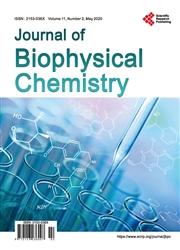Maintained Exposure to Spring Water but Not Double Distilled Water in Darkness and Thixotropic Conditions to Weak (~1 µT) Temporally Patterned Magnetic Fields Shift Photon Spectroscopic Wavelengths: Effects of Different Shielding Materials
引用次数: 15
Abstract
Spring water but not double-distilled water was exposed, in darkness, to a temporally patterned weak magnetic field that has been shown to affect planarian behavior and slow the rate of cancer cell proliferation. Exposure to the magnetic field caused a reliable shift in the peak (longer) wave-length of ~10 nm for fluorescence emissions and a ~20% increase (~100 counts) in fluorescence intensity. Spectral analyses verified a shift of 5 and 10 nm, equivalent to ~1.5 × 10-20 J “periodicity” across the measured wavelengths, which could reflect a change in the an intrinsic energy as predicted by Del Giudice and Preparata and could correspond to two lengths of O-H bonds. Wrapping the water sample containers during exposure with copper foil, aluminum foil, or plastic altered these fluorescent profiles. The most conspicuous effect was the elimination of a ~280 nm peak in the UV-VIS emission spectra only for samples wrapped with copper foil but not aluminum or plastic. These results suggest that weak magnetic fields produce alterations in the water-ionic complexes sufficient to be reliably measured by spectrophotometry. Because the effect was most pronounced when the spring water was exposed in darkness and was not disturbed the role of thixotropic phenomena and Del Giudice entrapment of magnetic fields within coherent domains of Pollack virtual exclusion zones (EZ) may have set the conditions for subsequent release of the energy as photons.在黑暗和触变条件下保持暴露于泉水而不是双重蒸馏水中,以弱(~1µT)时间图案磁场位移光子光谱波长:不同屏蔽材料的影响
在黑暗中,将泉水(而非双蒸馏水)暂时暴露在有图案的弱磁场中,这种磁场已被证明可以影响涡虫的行为,减缓癌细胞的增殖速度。暴露在磁场中导致荧光发射的峰值(较长)波长(~10 nm)发生可靠的位移,荧光强度增加了~20%(~100次计数)。光谱分析证实了5 nm和10 nm的位移,相当于~1.5 × 10-20 J的“周期性”,这可能反映了Del Giudice和Preparata预测的内在能的变化,并且可能对应于两个O-H键的长度。在暴露期间用铜箔、铝箔或塑料包裹水样容器会改变这些荧光剖面。最显著的效果是消除了紫外可见发射光谱中~280 nm的峰,只有用铜箔包裹的样品,而不是用铝或塑料包裹的样品。这些结果表明,弱磁场在水离子配合物中产生的变化足以用分光光度法可靠地测量。由于泉水暴露在黑暗中且不受干扰时,这种效应最为明显,因此触变现象和波拉克虚排斥带(EZ)相干域内磁场的Del Giudice俘获可能为随后以光子形式释放能量设定了条件。
本文章由计算机程序翻译,如有差异,请以英文原文为准。
求助全文
约1分钟内获得全文
求助全文

 求助内容:
求助内容: 应助结果提醒方式:
应助结果提醒方式:


